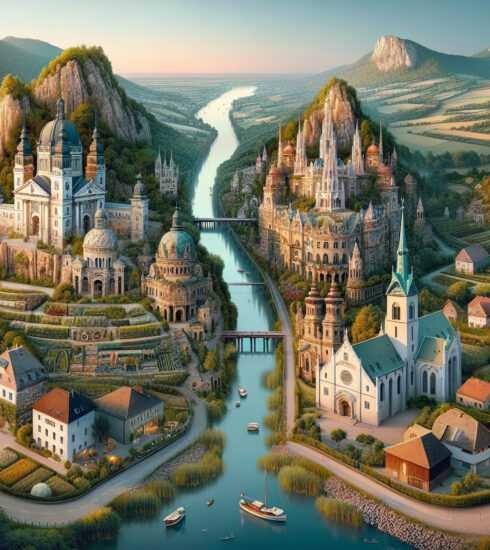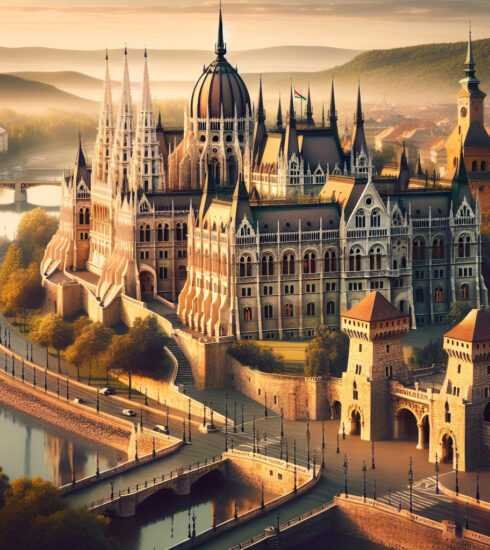Unearthing Hungarys Hidden Cultural Treasures: Revealing Forgotten Gems in this Eye-Opening Article
Unearthing Hungary’s Hidden Cultural Treasures: Unveiling the Forgotten Gems
Hungary is a country that is shrouded in rich history and cultural heritage. As a landlocked country in Central Europe, it is often overlooked by tourists in favor of its more famous neighbors. However, this hidden gem is home to a plethora of cultural landmarks that are waiting to be discovered and appreciated. In this article, we will delve into the depths of Hungary’s hidden cultural treasures, unearthing the forgotten gems that make this country so unique.
1. Buda Castle: A Majestic Landmark
One of the most iconic landmarks in Hungary is Buda Castle, located in the historic Castle District of Budapest. This majestic structure dates back to the 13th century and has undergone numerous transformations throughout the centuries. Today, it stands as a reminder of Hungary’s glorious past and attracts visitors from all over the world.
At the heart of the castle complex is the Royal Palace, which was the residence of Hungarian kings for centuries. The palace features stunning architecture, including Gothic, Renaissance, and Baroque elements. Visitors can explore its grandiose halls, visit the Hungarian National Gallery, and admire breathtaking views of the city from the vantage point of the castle.
To learn more about the fascinating history and architectural marvels of Buda Castle, check out this detailed article available at [link].
2. Székesfehérvár: The Coronation City
Located in central Hungary, Székesfehérvár is a city with a rich historical and cultural background. It was once the capital of Hungary and a significant center of power in the Middle Ages. The city played a crucial role in the country’s history, hosting numerous coronations and serving as a burial place for Hungarian kings.
One of the most notable landmarks in Székesfehérvár is the St. Stephen Cathedral, which dates back to the 11th century. This magnificent cathedral is a blend of Romanesque and Gothic architectural styles and houses the tombs of several Hungarian monarchs. Another significant cultural gem is the Bory Castle, a unique architectural masterpiece built in the early 20th century by the sculptor Jenő Bory.
To explore more about the cultural treasures of Székesfehérvár, including its historic buildings and museums, read this informative article [link].
3. The Great Synagogue of Budapest: A Symbol of Jewish Heritage
Budapest is home to one of the largest and most impressive synagogues in the world – the Great Synagogue. Located in the Jewish Quarter of the city, this architectural marvel is a symbol of Hungary’s Jewish heritage and an important historical site.
The Great Synagogue was built in the mid-19th century and features a unique blend of Moorish, Gothic, and Romantic styles. It can accommodate up to 3,000 people and is still an active place of worship. Visitors can explore the synagogue’s museum, which showcases the history and traditions of Hungarian Jewry, and pay their respects at the Holocaust Memorial in the courtyard.
4. Pécs: A Cultural Capital

Pécs is a vibrant city in Southern Hungary that has been named the European Capital of Culture in 2010. With its rich history and diverse cultural heritage, Pécs is a true gem waiting to be discovered.
One of the highlights of Pécs is the Pécs Cathedral, a stunning example of Romanesque architecture. The cathedral, also known as the St. Peter’s Basilica, dates back to the 11th century and houses a vast collection of religious artifacts. Another must-visit site is the Zsolnay Cultural Quarter, a complex of historic buildings that now houses museums, galleries, and workshops dedicated to promoting art and culture.
For further information on the hidden cultural treasures of Pécs, including its unique museums and architectural landmarks, refer to this comprehensive article [link].
5. Lake Balaton: The Hungarian Riviera
While not a cultural landmark in the traditional sense, Lake Balaton deserves a mention for its cultural significance in Hungary. Known as the “Hungarian Sea,” Lake Balaton is the largest freshwater lake in Central Europe and a popular tourist destination.
The surrounding area of Lake Balaton is dotted with charming towns and villages, each with its own unique cultural offerings. Visitors can explore the Tihany Peninsula, home to the stunning Tihany Abbey and breathtaking panoramic views. The town of Szigliget is famous for its medieval castle ruins, while Badacsony is renowned for its vineyards and wine production.
6. The Vernacular Architecture of Hollókő
Hollókő is a small village located in Northern Hungary that has been recognized as a UNESCO World Heritage Site for its beautifully preserved vernacular architecture. The village is known for its traditional houses with white-washed walls and thatched roofs, creating a picturesque scene straight out of a fairy tale.
Visitors to Hollókő can immerse themselves in the rich folklore and traditions of the region. The village hosts various cultural events throughout the year, including the Palóc Wedding, where visitors can experience traditional Palóc customs and celebrations. The village is also home to the Hollókő Castle, a medieval fortress that offers stunning views of the surrounding countryside.
7. The Valley of the Beautiful Women: Wine and Culture Unite
Located in the heart of the Eger wine region, the Valley of the Beautiful Women is a must-visit destination for wine lovers and culture enthusiasts alike. This picturesque valley is lined with wine cellars and vineyards, offering visitors the chance to sample the region’s famous wines.
Besides wine tasting, the Valley of the Beautiful Women also hosts various cultural events and festivals throughout the year. Visitors can enjoy traditional folk music and dance performances, sample local delicacies, and immerse themselves in the vibrant atmosphere of Hungarian culture.
In Conclusion
Hungary is a land filled with hidden cultural treasures just waiting to be discovered. From the majestic Buda Castle in Budapest to the picturesque village of Hollókő, there is something for everyone to explore and appreciate. These forgotten gems are a testament to Hungary’s rich history and vibrant cultural heritage. So pack your bags, put on your explorer’s hat, and embark on a journey to unearth Hungary’s hidden cultural treasures.






